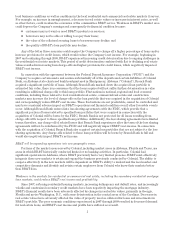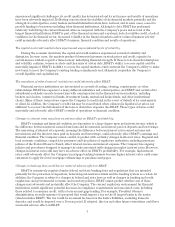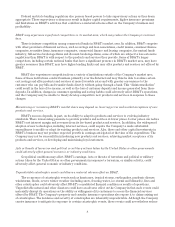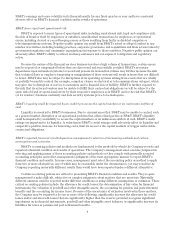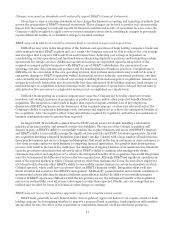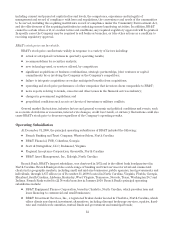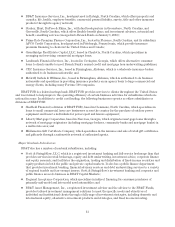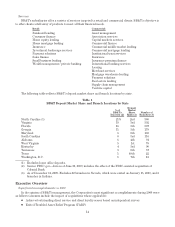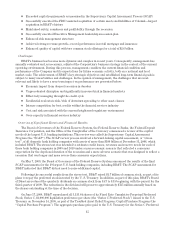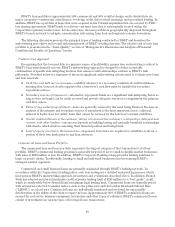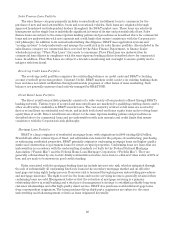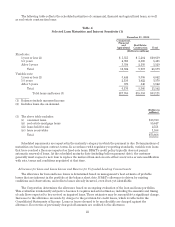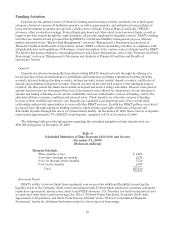BB&T 2009 Annual Report Download - page 15
Download and view the complete annual report
Please find page 15 of the 2009 BB&T annual report below. You can navigate through the pages in the report by either clicking on the pages listed below, or by using the keyword search tool below to find specific information within the annual report.ŠExceeded capital requirements as measured in the Supervisory Capital Assessment Process (SCAP)
ŠSuccessfully executed the FDIC-assisted acquisition of certain assets and liabilities of Colonial—largest
acquisition in BB&T’s history
ŠMaintained safety, soundness and profitability through the recession
ŠSuccessfully executed Executive Management leadership succession plan
ŠEnhanced risk management structure
ŠAchieved strong revenue growth—record performance in retail mortgage and insurance
ŠEnhanced quality of capital with two common stock offerings for a total of $2.6 billion
Challenges
BB&T’s business has become more dynamic and complex in recent years. Consequently, management has
annually evaluated and, as necessary, adjusted the Corporation’s business strategy in the context of the current
operating environment. During this process, management considers the current financial condition and
performance of the Company and its expectations for future economic activity, both on a national and local
market scale. The achievement of BB&T’s key strategic objectives and established long-term financial goals is
subject to many uncertainties and challenges. In the opinion of management, the challenges that are most
relevant and likely to have a near term impact on performance are presented below:
ŠEconomic impact from deepest recession in decades
ŠUnprecedented disruption and significantly increased risk in financial markets
ŠEffectively managing through the credit cycle
ŠResidential real estate risk / risk of downturn spreading to other asset classes
ŠIntense competition for best credits within the financial services industry
ŠCost and risk associated with the current heightened regulatory environment
ŠOver-capacity in financial services industry
Overview of Significant Events and Financial Results
The Board of Governors of the Federal Reserve System, the Federal Reserve Banks, the Federal Deposit
Insurance Corporation, and the Office of the Comptroller of the Currency commenced a review of the capital
needs of the largest U.S. banking institutions. This review was called the Supervisory Capital Assessment
Program (the “SCAP”). The SCAP review process involved a forward-looking capital assessment, or “stress
test”, of all domestic bank holding companies with assets of more than $100 billion at December 31, 2008, which
included BB&T. The stress test was intended to estimate credit losses, revenues and reserve needs for each of
these bank holding companies in 2009 and 2010 under a macroeconomic scenario that reflected a consensus
expectation for the depth and duration of the recession and a more adverse scenario that was designed to reflect a
recession that was longer and more severe than consensus expectations.
On May 7, 2009, the Board of Governors of the Federal Reserve System announced the results of the final
SCAP assessments for the 19 largest U.S. bank holding companies, including BB&T. The SCAP assessment for
BB&T indicated that BB&T did not need to raise additional capital.
Following the successful results from the stress test, BB&T raised $1.7 billion of common stock, as part of its
plans to repay the preferred stock invested by the U. S. Treasury. In addition, as part of this plan, BB&T’s Board
of Directors reduced the quarterly dividends on common stock from $.47 to $.15 beginning with the payout for the
third quarter of 2009. The reduction in the dividend will preserve approximately $725 million annually based on
the shares outstanding at the time of the decision.
On June 17, 2009, BB&T repurchased all 3,133.64 shares of its Fixed Rate Cumulative Perpetual Preferred
Stock, Series C, $1,000,000 liquidation preference per share (the “Series C Preferred Stock”) issued to the U.S.
Treasury on November 14, 2008, as part of the Troubled Asset Relief Program: Capital Purchase Program (the
“Capital Purchase Program”). The aggregate purchase price paid to the U.S. Treasury for the Series C Preferred
15


